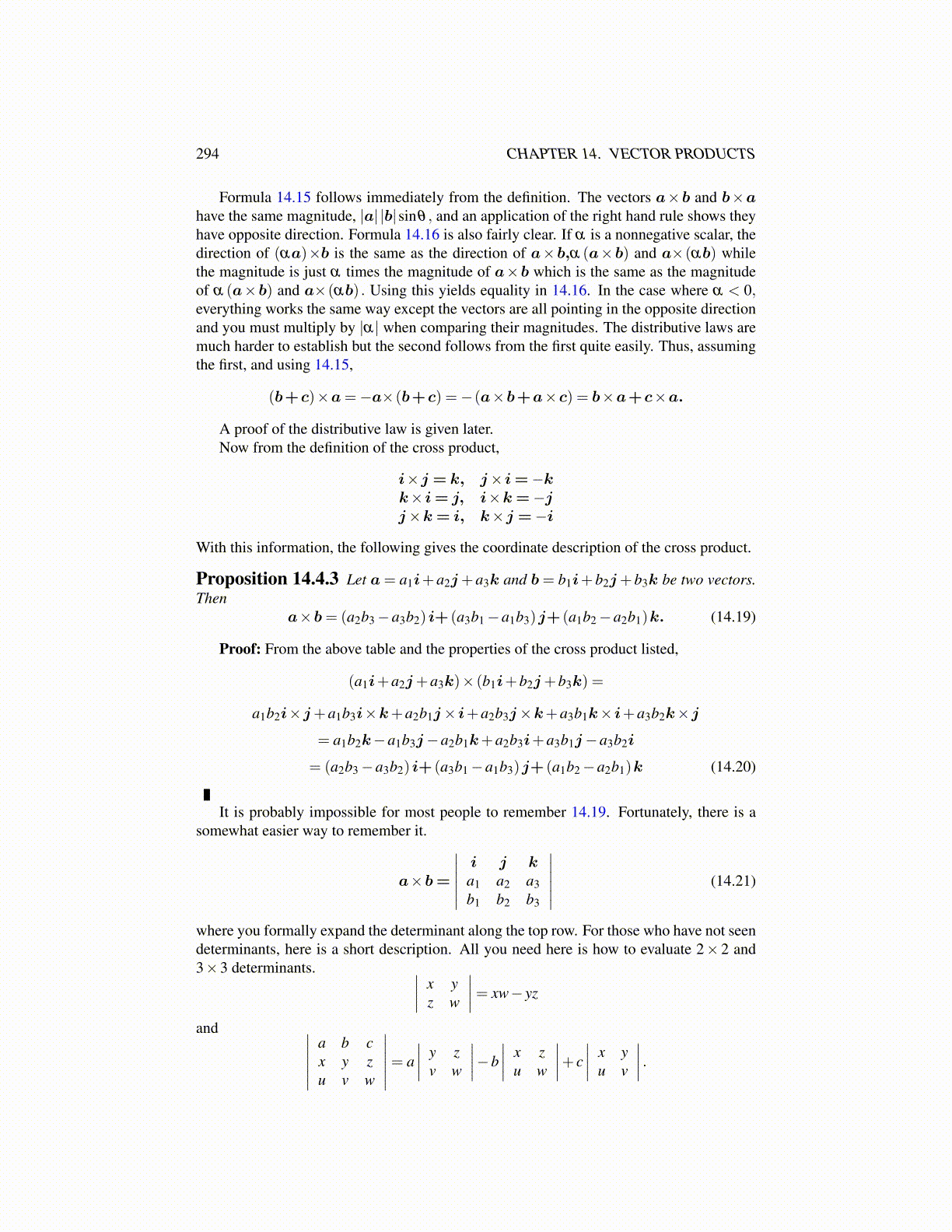
294 CHAPTER 14. VECTOR PRODUCTS
For a,b, and c vectors, one obtains the distributive laws,
a×(b+c) = a×b+a×c, (14.17)
(b+c)×a= b×a+c×a. (14.18)
Formula 14.15 follows immediately from the definition. The vectors a×b and b×ahave the same magnitude, |a| |b|sinθ , and an application of the right hand rule shows theyhave opposite direction. Formula 14.16 is also fairly clear. If α is a nonnegative scalar, thedirection of (αa)×b is the same as the direction of a×b,α (a×b) and a×(αb) whilethe magnitude is just α times the magnitude of a×b which is the same as the magnitudeof α (a×b) and a×(αb) . Using this yields equality in 14.16. In the case where α < 0,everything works the same way except the vectors are all pointing in the opposite directionand you must multiply by |α| when comparing their magnitudes. The distributive laws aremuch harder to establish but the second follows from the first quite easily. Thus, assumingthe first, and using 14.15,
(b+c)×a=−a×(b+c) =−(a×b+a×c) = b×a+c×a.
A proof of the distributive law is given later.Now from the definition of the cross product,
i×j = k, j× i=−kk× i= j, i×k=−jj×k= i, k×j =−i
With this information, the following gives the coordinate description of the cross product.
Proposition 14.4.3 Let a= a1i+a2j+a3k and b= b1i+b2j+b3k be two vectors.Then
a×b= (a2b3 −a3b2) i+ (a3b1 −a1b3)j+ (a1b2 −a2b1)k. (14.19)
Proof: From the above table and the properties of the cross product listed,
(a1i+a2j+a3k)× (b1i+b2j+b3k) =
a1b2i×j+a1b3i×k+a2b1j× i+a2b3j×k+a3b1k× i+a3b2k×j
= a1b2k−a1b3j−a2b1k+a2b3i+a3b1j−a3b2i
= (a2b3 −a3b2) i+ (a3b1 −a1b3)j+ (a1b2 −a2b1)k (14.20)
It is probably impossible for most people to remember 14.19. Fortunately, there is asomewhat easier way to remember it.
a×b=
∣∣∣∣∣∣i j k
a1 a2 a3b1 b2 b3
∣∣∣∣∣∣ (14.21)
where you formally expand the determinant along the top row. For those who have not seendeterminants, here is a short description. All you need here is how to evaluate 2× 2 and3×3 determinants. ∣∣∣∣ x y
z w
∣∣∣∣= xw− yz